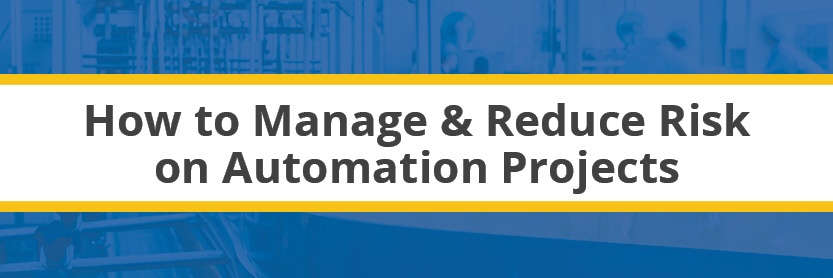
Some projects may appear to be simple in the beginning, however problems arise that might not have been considered, which can ultimately end up costing a large amount of precious time and money. Delays can be avoided by taking a few steps to minimize risk and increase productivity. We will explore how uncertainties can derail a project and how you can reduce damage to your company’s timeline and budget.
Avoid Risk from Suppliers
Everyone has run into an instance where your shipment was late and/or the products were incorrect. Even a small mishap in an order of parts can set you back days at a time. There is always going to be some risk involved in working with another company, but how can we minimize that potential risk? The following steps can help minimize or eliminate these issues.
- Never Assume: Communicate directly with vendors familiar with your business and describe precisely what you need them to deliver. The more detail the better to avoid any confusion.
- Timeline: Create a timeline for each event that needs to be completed. This timeline needs to be communicated clearly to all parties involved.
- Define Done: "Done" can be seen as a subjective word if not clearly conveyed to your suppliers. Define a product's completion by setting clear guidelines for what the finished product should have.
Complex Business Needs
There are business risks in any company, but the key is whether you can identify where the risks are and if the risks can be accounted for or included in the company’s overall budget. How can we plan for risk in a company automation project? There are a few crucial things to keep an eye out for.
- When altering an old system all of the existing problems that system has will brought to your attention. Therefore, plan for time to fix issues that are going to come to the surface. Depending on your unique situation, it is a good idea to contact an automation engineering firm.
- Be careful to avoid integrating components that don’t have compatible systems or parts you have little experience working with.
- Keep the number of components to a minimum. The risk of breakdowns or delays is greatly increased with more modules added to a system. If you are inexperienced working with automation systems, it is a good idea to get a professional's input to avoid causing further problems.
Precautionary Questions
Before you start any automation project it is important to ask yourself a few simple questions before green lighting the plan:
- How important is this feature to the success of our company?
- What will we do if the project fails?
- How long will the facility be closed for this project?
- When is the best time to implement this upgrade?
- What kind of impact will this have on productivity?
Carefully considering all of the risk and reducing the probability of delays allows your company to accurately budget and avoid delays in production.
What Premier Automation Can Offer
Premier Automation offers a wide variety of simple and effective solutions to most automation projects. Our System Integrators can help you appraise your plant's productivity and find automation solutions for your unique applications. Premier Automation was ranked #19 nationally as a System Integrator Giant on a list of the most innovative system integrators in the United States.
Our team of 30 engineers works relentlessly to create a fully integrated automation environment for our customers to ensure better reliability, higher quality, and total production visibility. If you're seeking a partner for your next automation or controls project, contact one of our experienced engineers to schedule a free on-site visit.
Interested in learning more? Speak to an expert!



